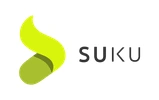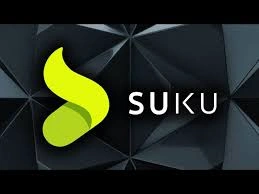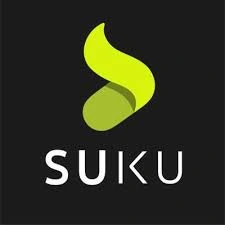SUKU Blockchain: Powering Digital Identity and Ownership
Table of Contents

What if you could verify your identity, protect your assets, and connect seamlessly across Web3, all with one platform? Meet SUKU (SUKU), the next-gen digital identity and ownership protocol transforming how we interact in decentralized spaces. With a sharp focus on privacy, security, and user empowerment, SUKU is building the foundation for a trustless world where data belongs to you, not centralized intermediaries.
Whether you’re a creator, developer, or simply exploring Web3, SUKU makes it simple to plug into decentralized identity systems, asset ownership frameworks, and interoperable dApps. From DeFi to digital credentials, it’s redefining how we verify and connect in a borderless, blockchain-driven society. Let’s break down what makes SUKU a leading force in the decentralized identity revolution.
For more insights and updates on the latest trends in crypto, be sure to check out our Nifty Finances platform, which is your gateway to smarter financial decisions in the digital economy.

What Is SUKU?
As Web3 continues to reshape the internet, one of its biggest challenges remains unsolved: digital identity and ownership. Enter SUKU—a powerful, blockchain-based platform on a mission to bring trust, transparency, and user control to the decentralized web. SUKU isn’t just another blockchain project—it’s a bridge between users and the secure, self-sovereign identity model that Web3 desperately needs.
SUKU’s Mission: Powering Digital Identity in Web3
At its core, SUKU is building an open and interoperable identity layer for Web3. The platform’s goal is simple but transformative: to give individuals full control over their digital identities, assets, and data. In a digital world increasingly defined by centralized control, SUKU flips the script, offering a system where users are the owners of their identity, not the product.
SUKU’s infrastructure is designed to be easy to use, developer-friendly, and fully compatible with multiple blockchains and ecosystems. The team’s long-term vision is to enable a world where every user, app, and asset can interact securely and transparently through a trusted identity system that works across the entire decentralized web.
Solving Identity and Ownership Challenges in Web3
Web3 promises decentralization and user empowerment—but right now, it’s fragmented and hard to navigate. Users must juggle multiple wallets, seed phrases, and account logins across different platforms. There’s no unified way to prove who you are, verify ownership, or port your reputation from one dApp to another. This lack of cohesive identity infrastructure limits adoption and usability.
SUKU solves this by offering a self-sovereign identity (SSI) model. Through SUKU, users can create verified, portable digital identities that are controlled entirely by them. These identities are not stored on centralized servers, but cryptographically secured and accessible only to the user. No one else owns or controls the data—you do.
This model allows for secure, reusable verification across platforms. Whether you’re logging into a DAO, participating in a decentralized game, or claiming NFT ownership, your SUKU identity proves who you are and what you own, without compromising privacy.
The Shift Toward User-Owned Digital Identities
We’re witnessing a global shift: from centralized platforms controlling identity and data to individuals taking back ownership. This movement is central to the Web3 revolution, and SUKU is leading the charge.
SUKU enables:
- Proof of identity for users across Web3 platforms.
- Verification of asset ownership for NFTs and digital collectibles.
- Cross-platform portability, allowing you to carry your identity and history anywhere in the decentralized world.
As more dApps, marketplaces, and digital experiences integrate with SUKU, users benefit from seamless, secure interactions without needing to constantly re-verify or trust new platforms. It’s a Web3 passport, owned by you, usable anywhere.
Core Features of the SUKU Ecosystem
The SUKU ecosystem is built to redefine how digital identities and assets are managed, verified, and interacted with in the Web3 world. It brings together the power of decentralized identity, trustless ownership verification, and seamless interoperability to create a platform that allows users to own and control their digital presence. Below, we explore the core features that make SUKU stand out in the world of decentralized applications (dApps) and blockchain solutions.
SUKU Wallet: Multi-Purpose Identity and Asset Manager
At the heart of the SUKU ecosystem is the SUKU Wallet, a powerful tool designed to manage both identity and assets seamlessly. The SUKU Wallet allows users to store their digital identity, private keys, and assets—all in one secure place. But it doesn’t stop there; the wallet also acts as a hub for managing verifiable credentials, proof of ownership, and other key elements of your digital self.
With the SUKU Wallet, users can manage everything from NFTs to tokenized real-world assets with ease. It provides a single interface where identity and ownership are easily accessible, ensuring that users can verify who they are and what they own in a seamless, secure manner across Web3 applications.
Decentralized ID (DID) and Verifiable Credentials
One of the most significant features of the SUKU ecosystem is its Decentralized Identity (DID) system. In the traditional Web2 world, your identity is often controlled and verified by centralized entities like social media platforms, banks, or government organizations. In contrast, SUKU’s DID allows users to own their identity on the blockchain, putting full control back in their hands.
The DID system is built on verifiable credentials (VCs), which are cryptographically secure pieces of data that prove various attributes about the user (e.g., age, location, membership in a community). These credentials are issued by trusted entities and can be verified instantly by anyone on the network, without the need for a central authority.
With SUKU’s DID and verifiable credentials, users can participate in decentralized ecosystems, proving their identity and attributes without relying on third-party verifiers. This is the foundation for trustless interactions in Web3, where privacy and data security are paramount.
Trustless Ownership Verification and Asset Authentication
In the world of Web3, verifying the ownership and authenticity of digital assets is critical. SUKU provides trustless ownership verification for any asset, whether it’s an NFT, tokenized physical goods, or even a membership badge in a decentralized community.
By leveraging blockchain technology, SUKU ensures that assets are authentic and traceable, and ownership can be easily proven without intermediaries. This is particularly important in areas like digital art, luxury goods, and supply chain management, where counterfeit products or misrepresentations are common.
For example, an NFT created on the SUKU ecosystem will be paired with a verifiable, secure credential that confirms its authenticity, ensuring buyers and sellers can trust the digital goods being exchanged. This trustless authentication builds confidence and security in decentralized markets.
Cross-Platform Interoperability
One of the most exciting aspects of SUKU’s ecosystem is its cross-platform interoperability. Unlike traditional identity solutions that lock users into a specific network or platform, SUKU’s identity and assets are designed to work seamlessly across different Web3 environments. Whether it’s decentralized finance (DeFi), social platforms, gaming ecosystems, or digital marketplaces, SUKU allows users to take their identity and verified assets with them wherever they go.
This cross-platform functionality is powered by SUKU’s open, interoperable standards and the DID system. Users can prove ownership, participate in governance, or engage in decentralized applications without worrying about compatibility between platforms. The result is a smooth, frictionless experience across the decentralized web.

SUKU’s Digital Identity Protocol: Empowering Secure Self-Sovereign Identity
As Web3 continues to redefine how we interact with digital ecosystems, one of the most pressing challenges is identity management. Traditional systems rely on centralized authorities to verify identities, leaving users vulnerable to breaches, fraud, and loss of control. SUKU’s Digital Identity Protocol offers a groundbreaking solution, empowering users with secure, self-sovereign identities that put control back in their hands.
This blog post dives into how SUKU is transforming digital identity with privacy-first design, zero-knowledge proofs, and real-world use cases that demonstrate the protocol’s versatility.
How SUKU Enables Secure Self-Sovereign Identity
At the heart of SUKU’s Digital Identity Protocol is the concept of self-sovereign identity (SSI). In a world where personal data is often controlled by centralized entities like social networks or banks, SSI gives individuals full ownership and control of their digital identities. With SUKU’s protocol, users don’t need to trust third parties to verify their identity; they can create, manage, and share their identity data directly on the blockchain.
Using blockchain technology, SUKU creates a decentralized identity system where the user, not any organization, holds their personal data. This decentralized ledger stores essential identity attributes—such as name, age, membership, or credentials—securely and immutably, allowing users to control their identity across various platforms and applications.
By integrating with SUKU, individuals can prove their identity across multiple Web3 environments (e.g., DeFi platforms, social networks, marketplaces) without revealing unnecessary information. This self-sovereign model removes the reliance on intermediaries, increasing transparency and reducing the risk of data breaches.
Privacy-First Design and Zero-Knowledge Proofs
Privacy is a top concern for users in the digital age, and SUKU’s Digital Identity Protocol places it at the forefront of its design. The platform uses zero-knowledge proofs (ZKPs)—a cryptographic method that allows one party to prove they know something (e.g., their age, membership status, or identity) without actually revealing the information itself. This ensures that users can validate their identity and credentials while maintaining complete privacy.
For example, a user might need to prove they are over 18 to participate in an NFT marketplace. Using ZKPs, SUKU’s protocol allows the user to provide proof of their age without disclosing their exact birthdate or any other personal details. This method not only secures the user’s privacy but also minimizes the exposure of sensitive data, making the digital landscape safer and more trustworthy.
Additionally, SUKU’s privacy-first design ensures that identity data is stored in a decentralized and encrypted manner, giving users full control over when and how their information is shared. Users can selectively disclose information to verified parties, offering transparency without sacrificing privacy.

Use Cases: Web3 Logins, Credentials, and More
SUKU’s Digital Identity Protocol opens the door to a variety of use cases in the Web3 space:
- Web3 Logins: With SUKU’s decentralized identity, users can log into dApps and platforms without the need for traditional usernames and passwords. A single digital identity that is controlled by the user can be used across multiple platforms, simplifying the user experience while enhancing security.
- Verifiable Credentials: SUKU allows users to carry verifiable credentials (VCs), such as proof of qualifications, employment history, or membership in specific communities. These credentials are cryptographically signed and can be shared securely with any service or platform that supports SUKU’s protocol.
- Decentralized Governance: As more DAOs (Decentralized Autonomous Organizations) emerge, they need secure, verifiable identities to ensure transparency and accountability in voting and decision-making processes. SUKU provides a seamless solution for identity verification and reputation building within these governance systems.
- NFTs and Digital Ownership: SUKU’s protocol can verify ownership of digital assets like NFTs or tokenized goods, allowing users to prove they own a specific asset without revealing other personal information. This creates a trustless environment for digital transactions.
SUKU Token Utility and Governance: Fueling the Ecosystem
In any thriving blockchain ecosystem, the native token serves as the backbone, enabling transactions, incentivizing participants, and driving the platform’s governance. The $SUKU token is the cornerstone of the SUKU ecosystem, powering everything from staking to community governance, while also fueling platform incentives and rewarding users for their contributions. Let’s dive into the utility of the $SUKU token, its role in governance, and how the tokenomics are designed to ensure sustainable growth.
Role of the $SUKU Token in the Ecosystem
The $SUKU token plays a central role in the SUKU ecosystem, serving as both the currency for transactions and the key to accessing platform features. It facilitates operations within the decentralized identity and asset management systems, helping users interact securely with Web3 applications.
Some of the core functions of $SUKU include:
- Access to Platform Services: Users can pay for services within the SUKU ecosystem, such as identity verification, credentialing, and asset authentication. $SUKU tokens are used as the primary means of exchange within these services.
- Transaction Fees: Whether you’re verifying a credential or executing a smart contract, $SUKU is used to cover transaction fees, ensuring that the ecosystem remains self-sustaining.
- Incentive Mechanism: $SUKU incentivizes platform participation. Users who contribute to the ecosystem, such as by creating or verifying credentials, are rewarded with tokens, encouraging more users to engage and build on the platform.
By integrating the token throughout the ecosystem, SUKU ensures that $SUKU remains the lifeblood of the platform, powering transactions and services for every participant in the ecosystem.
Staking, Governance, and Platform Incentives
The $SUKU token’s utility extends beyond being a transactional currency—it also plays a vital role in the governance and incentive systems of the SUKU platform. Through staking and governance, token holders can influence the future direction of the platform.
- Staking: Token holders can stake their $SUKU tokens to help secure the network and validate transactions. Staking also grants holders rewards, aligning the interests of token holders with the success of the ecosystem. This staking mechanism ensures a decentralized and secure platform while offering users passive rewards for their participation.
- Governance: $SUKU token holders also participate in the platform’s governance. Through decentralized governance, token holders have a say in decisions such as platform upgrades, new feature integrations, and the allocation of ecosystem funds. This community-driven governance model ensures that SUKU evolves in a way that reflects the needs and desires of its users, making the platform truly decentralized.
- Incentives for Developers and Users: SUKU tokens are used to incentivize both developers and users. Developers who contribute to building the ecosystem, whether by creating new features or improving the platform, are rewarded with tokens. Users who engage with the platform through actions like verifying their identity, using SUKU’s services, or participating in dApp interactions also earn tokens. These incentives encourage a vibrant and active community, ensuring that SUKU remains a robust and growing platform.
Tokenomics and Future Utility Expansion
The tokenomics of $SUKU are designed to ensure the long-term sustainability and growth of the platform. With a limited supply and a balanced distribution model, SUKU maintains scarcity while rewarding participants. The tokenomics are built to incentivize early adopters and long-term users alike, with a portion of tokens allocated for staking rewards, platform development, community initiatives, and ecosystem growth.
Looking forward, the utility of the $SUKU token is set to expand as SUKU continues to evolve. Future expansions might include:
- Integration with more dApps: As SUKU’s identity and credentialing solutions gain traction across Web3, the $SUKU token will be integrated into an even wider range of decentralized applications, further increasing its utility.
- Partnerships with Enterprises: SUKU’s identity management system could attract enterprises seeking to adopt blockchain for secure identity and asset management. This would increase demand for $SUKU as an enterprise-ready token for corporate applications.
- Cross-Chain Functionality: As the blockchain ecosystem becomes increasingly multi-chain, $SUKU’s utility may expand across different blockchains, creating additional use cases and value for token holders.
SUKU (SUKU) is leading the charge in making digital identity and ownership truly decentralized and user-first. In a world increasingly dependent on data and digital interaction, SUKU offers a much-needed shift toward privacy, autonomy, and interoperability. By anchoring identity on the blockchain and enabling cross-platform verification, SUKU empowers users and creators alike to take full control of their Web3 experiences.
As the Web3 space matures, solutions like SUKU will be critical to building trustless ecosystems that scale beyond speculation. Whether you’re building, verifying, or simply owning your digital life, SUKU is the key to doing it right. Ready to take control of your digital identity? Join the SUKU movement today.